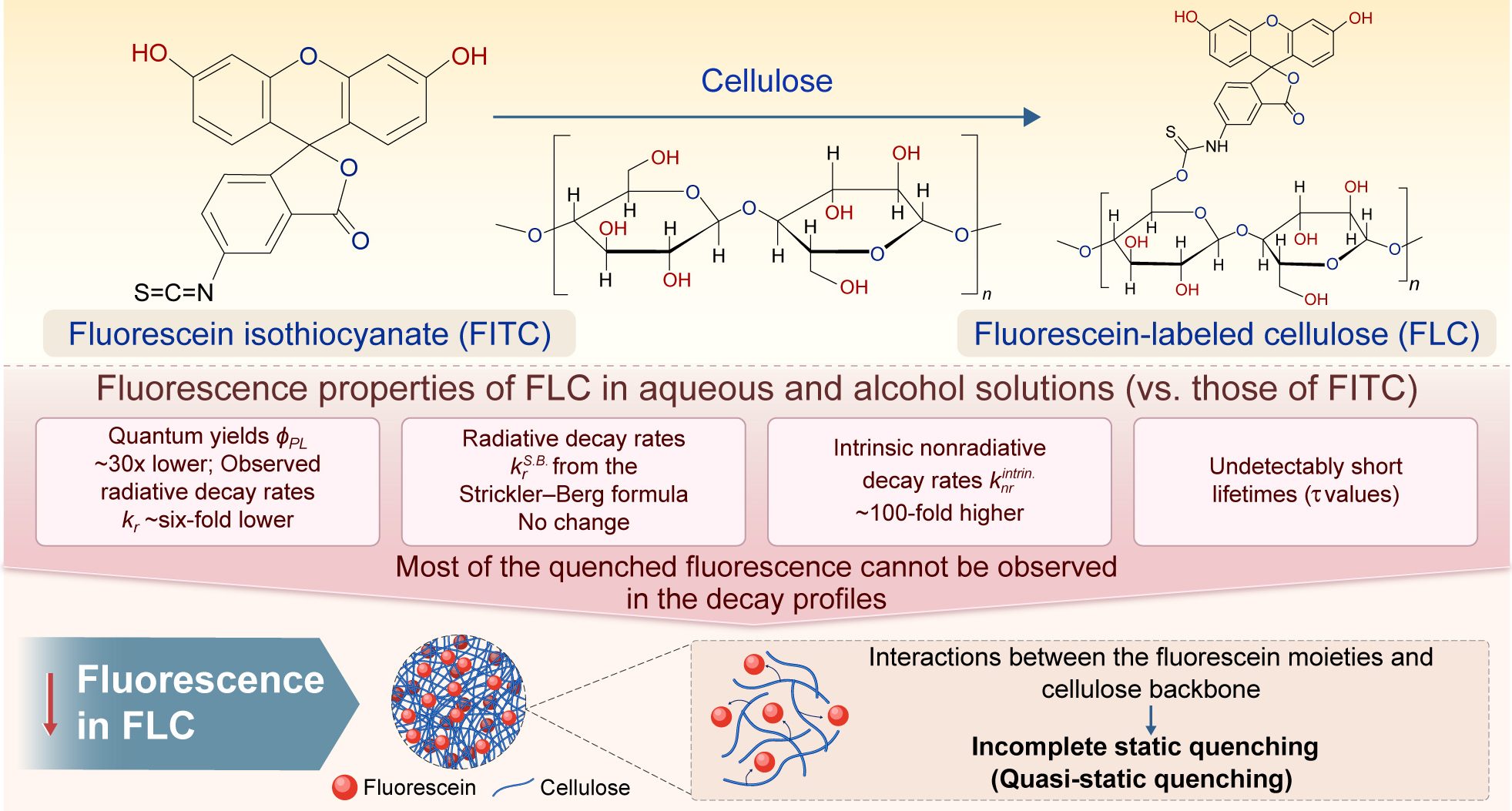Characterizing the photoluminescence of fluorescein-labeled cellulose in aqueous and alcohol solutions: Influence of the cellulose backbone
Although many dyes have been introduced into cellulose, whether bound to its backbone or within a cellulose matrix, few studies have determined whether the backbone statically or dynamically quenches the photoluminescence of the dye. To advance cellulosic fluorescent films, the influence of the cellulose backbone on photoluminescence must be understood. We determined the fluorescence properties of fluorescein isothiocyanate (FITC) and fluorescein-labeled cellulose (FLC) in water and alcohol, including their quantum yields ɸPL, lifetimes τ, and rates of radiative kr and nonradiative knr decay. Dissolved FLC had a ~30× lower ɸPL than FITC, suggesting that incorporating FITC into the cellulose backbone remarkably reduces the fluorescence efficiency. The FLC solutions had a 6-fold lower kr than their FITC counterparts but a 10–20 times higher knr. Presumably, this was because the cellulose backbone interacted weakly with the fluorescein moieties, suggesting a quenching mechanism that can be termed quasi-static, corresponding to static quenching between the fluorescein moieties and cellulose backbone, in addition to the fluorescence quenching caused by the intramolecular nonradiative processes of fluorescein, as observed in conventional molecules. Using the Strickler‒Berg formula, we deduced the analytical radiative decay rate constants krS.B. and eventually estimated the number of very short-lived fluorescein moieties per single fluorescent fluorescein moiety, corresponding well with static quenching.




